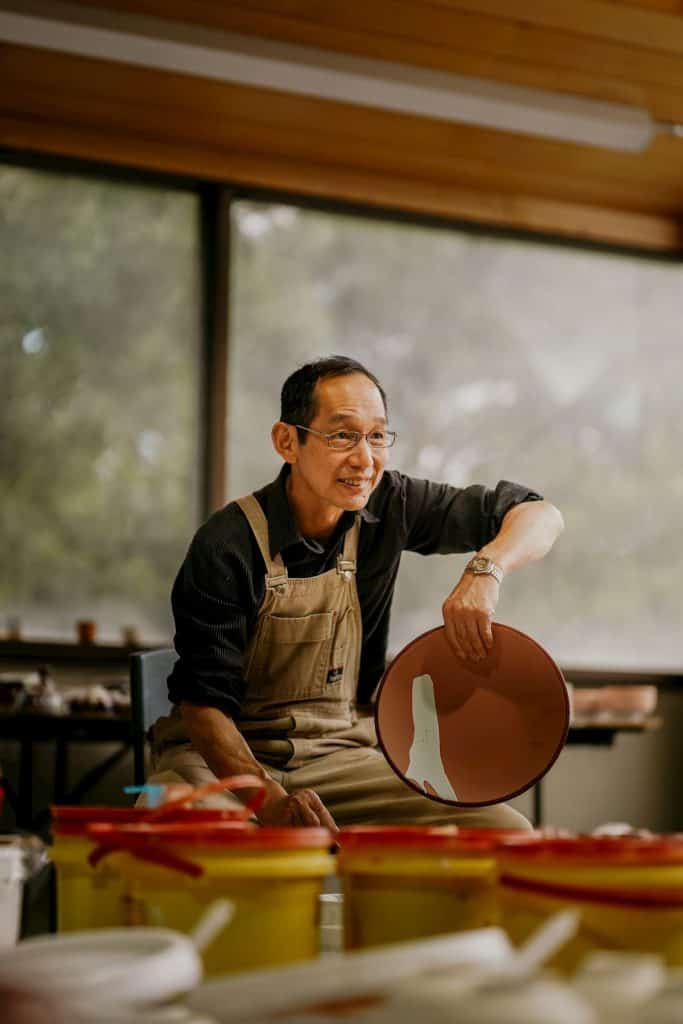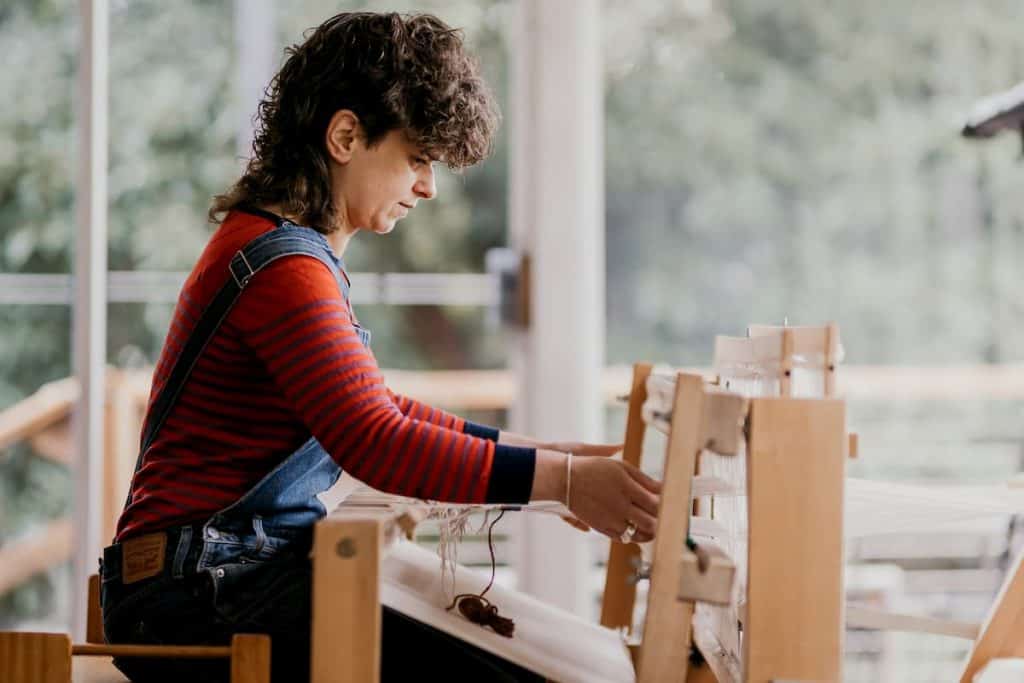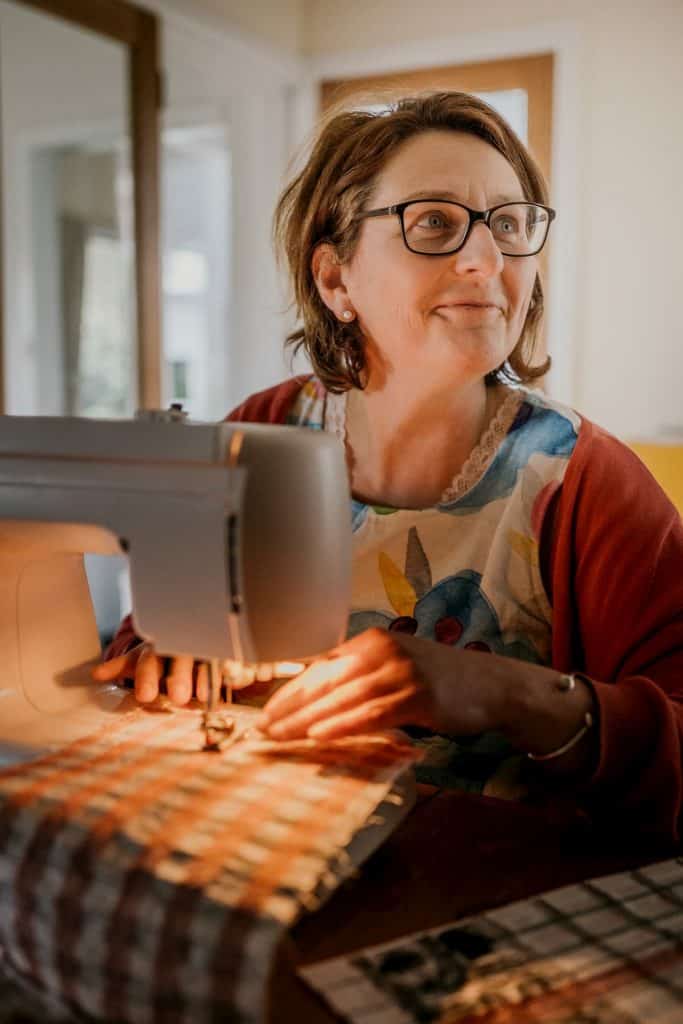- Koji Hoashi, ceramic artist and potter
- Ana Peditis, weaver and textile artist, photo: Bowie Wallace
- Jemima Olsen, textile artist, photo: Bowie Wallace
The city of Ballarat in Central Victoria, south-east Australia, was recently designated a UNESCO Creative City for Craft and Folk Art. In response to our questions, Tara Poole, Coordinator Creative Cities, says that Ballarat will “lead by example” in sustaining heritage and stories through crafts.
✿ When was the idea born of Ballarat as a potential UNESCO Creative City?
The idea for the application to the UNESCO Creative City Network was initiated from the state government’s Creative State initiative which commits to placing the creative industries at the forefront of the State’s future growth, prosperity and liveability. This lead to the development of The City of Ballarat Creative City Strategy which underpinned the application to join the UNESCO Creative Cities Network and was developed over an 18-month period. The Creative City Strategy involved three phases of whole-of-community public consultation, targeted engagement with constituents of the creative sector, as well as governance by a representative steering committee, comprising of Council, business, university, Indigenous peoples, regional arts practitioners and State Government. The three phases of public consultation, which employed a variety of methods, resulted in nearly 500 engaged interactions with community members from a wide range of organisations. When asked to envision the future of Ballarat as a creative city, stakeholders from across the six sectors pointed to ways to support, nurture and leverage the local creative community from the grassroots level upwards in a way that binds the sector. Ballarat and Bendigo will join Melbourne and Geelong as members of the UNESCO Creative City Network, elevating Victoria’s role as a state of creative cities.
✿ What was the process of evaluation?
The City of Ballarat presented an application to the UNESCO Creative City Network, where 66 newly declared UNESCO cities were announced, totalling 246 worldwide. This application went to the head office of the UNESCO Creative Cities who evaluated the application and was then evaluated by the existing network of UNESCO Cities of Craft and Folk Art.
✿ Was Sovereign Hill a feature in the case?
As Sovereign Hill Museum Association has dedicated space and facilities for education on lost and forgotten trades and maintain where they preserve rare skills, including those of indigenous peoples, through extensive research and training, they were naturally included in the application as Ballarat’s long-term connection to artisans and craft-making skills of the past. However, there are many more organisations and initiatives that were identified in the application.
A few others include:
- Art Gallery of Ballarat has a comprehensive education program for all art forms including Indigenous and intercultural crafts for all ages.
- Fibre Arts Australia makes the city their home twice a year to share skills and knowledge about working with fibres. The specialised classes are presented by internationally recognised artists and makers, many travelling from overseas to attend, and the focus is on professional training and development. The Conference has been running for over a decade and has inspired and educated many practitioners.
- Ballarat Tech School uses design thinking to link traditional arts practitioners with new technological approaches. Offering 3d printing and advice on commercialising a product, this is a vital service for creatives and makers.
- Runway is an entrepreneurial start-up program that steps creatives and others through the process of commodifying their artisanal trade.
- Federation University Australia provides courses and degrees in visual and fine arts and crafts.
- Independent craft educators and providers across the city provide classes in fibre arts, weaving, shibori linen dyeing, printmaking, lead lighting, silversmithing, jewellery, etc.
- Aboriginal Literacy Centre Indigenous classes offer free art training and education to young indigenous students on a weekend.
- Ballarat U3A is a volunteer learning cooperative of older people teaching papercrafts, visual art, printmaking and traditional crafts (e.g. woodwork, embroidery, patchwork, knitting, crochet, weaving, lead lighting, jewellery making and mosaics).
✿ As Australia’s first UNESCO Creative City for Craft and Folk Art, do you see Ballarat playing a national role in promoting craft in Australia?
As the first City of Craft and Folk Art in Australia, there will no doubt be learnings that can be shared with other cities. Our initial program Ballarat Open Studios – The Art of Making will feature talks and forums to generate the conversations about traditional and contemporary craft practice, lost and forgotten trades and our Indigenous crafts and skills.
We believe it is important for the city of Ballarat to focus attention on the importance that craft and folk art play within a creative ecosystem, and the city will certainly be active in promoting this. Certainly for Ballarat the storytelling and narrative we would have captured through craft, especially that practised by our First Nations peoples, has been interrupted by the city’s chequered history removing indigenous people from their land, becoming a goldrush town and then a city of migrants. However, becoming part of the UNESCO Creative Cities Network has given us renewed attention on how to recapture lost skills and support newer interpretations of craft and folk art. We would prefer to be a city that leads by example, especially on important national matters as our heritage and story.
The commitment to a vision of a Creative City of Craft and Folk Art falls under four key pillars for Ballarat:
Pillar 1 –
Creative a new economic heartbeat: Craft and folk art have helped our city survive throughout time. We have a responsibility to harness these skills and create environments where we can support practitioners to become sustainable.
Pillar 2 –
Celebrating, protecting and reinterpreting the rare and forgotten crafts: Heritage is critical for our city. Rare crafts, fine skills and artisanal experience are important to conserve, preserve and research.
Pillar 3 –
A welcome platform for our newer community members: As a Creative City of Craft and Folk Art we seek to integrate and harness knowledge, growing new trades and sectors, sustaining and broadening skills.
Pillar 4 –
Reinvigorating the skills of our indigenous communities: with a traceable heritage of more than 65,000 years, the skills and crafts of our indigenous peoples of the Wadawarrung, the Dja Dja Warrung and others from the Kulin nation, have been severely interrupted. We are dedicated to supporting our First Nations peoples in tracing these back, reawakening old craft forms and putting them at the heart of our craft-based city.
Ballarat will host the Art of Making festival 3-13 April 2020. We’ll keep you up to date with news of this promising event.




